
How to Use LCD 0802A 8x2: Examples, Pinouts, and Specs
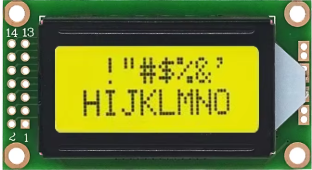
 Design with LCD 0802A 8x2 in Cirkit Designer
Design with LCD 0802A 8x2 in Cirkit DesignerIntroduction
The LCD 0802A is a 16-pin alphanumeric liquid crystal display (LCD) module capable of displaying 2 lines of 8 characters each. It is widely used in electronic projects for presenting text-based information such as sensor readings, system status, or user instructions. This module is compatible with most microcontrollers, including Arduino, and is ideal for applications requiring a compact and efficient text display.
Explore Projects Built with LCD 0802A 8x2
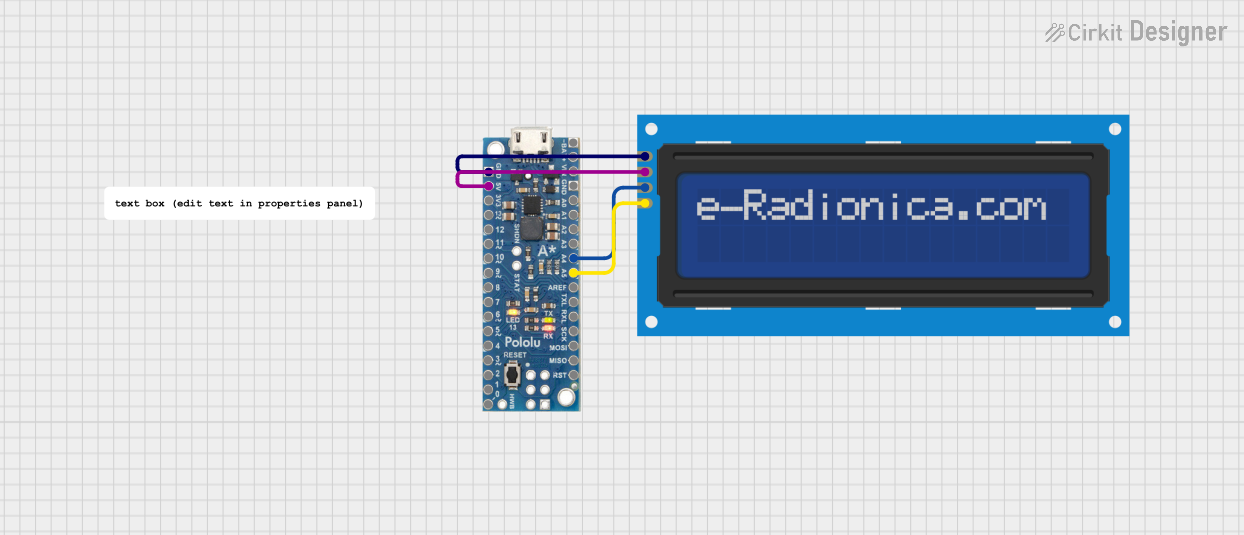
 Open Project in Cirkit Designer
Open Project in Cirkit Designer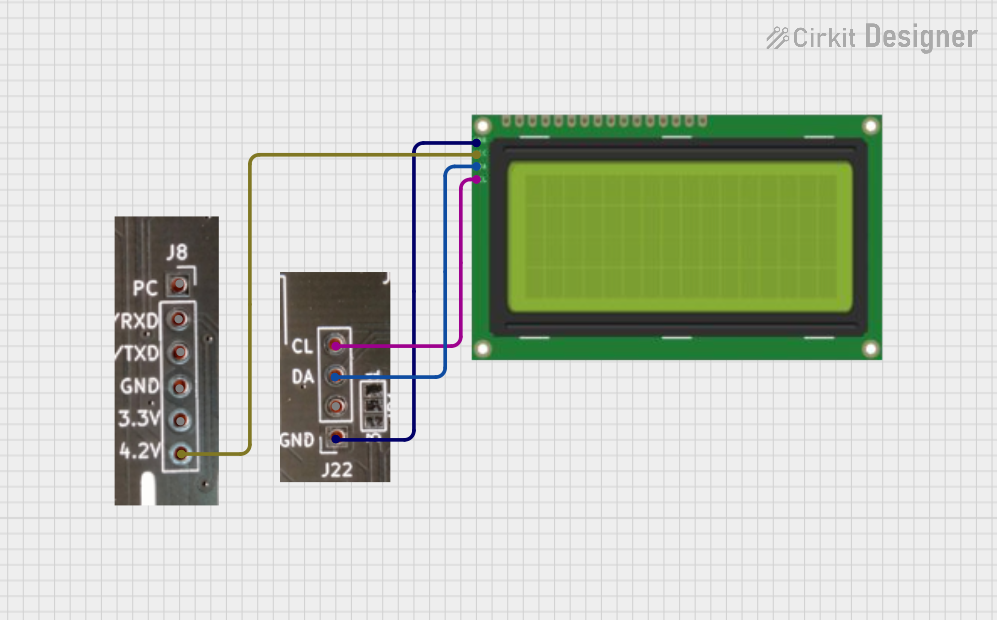
 Open Project in Cirkit Designer
Open Project in Cirkit Designer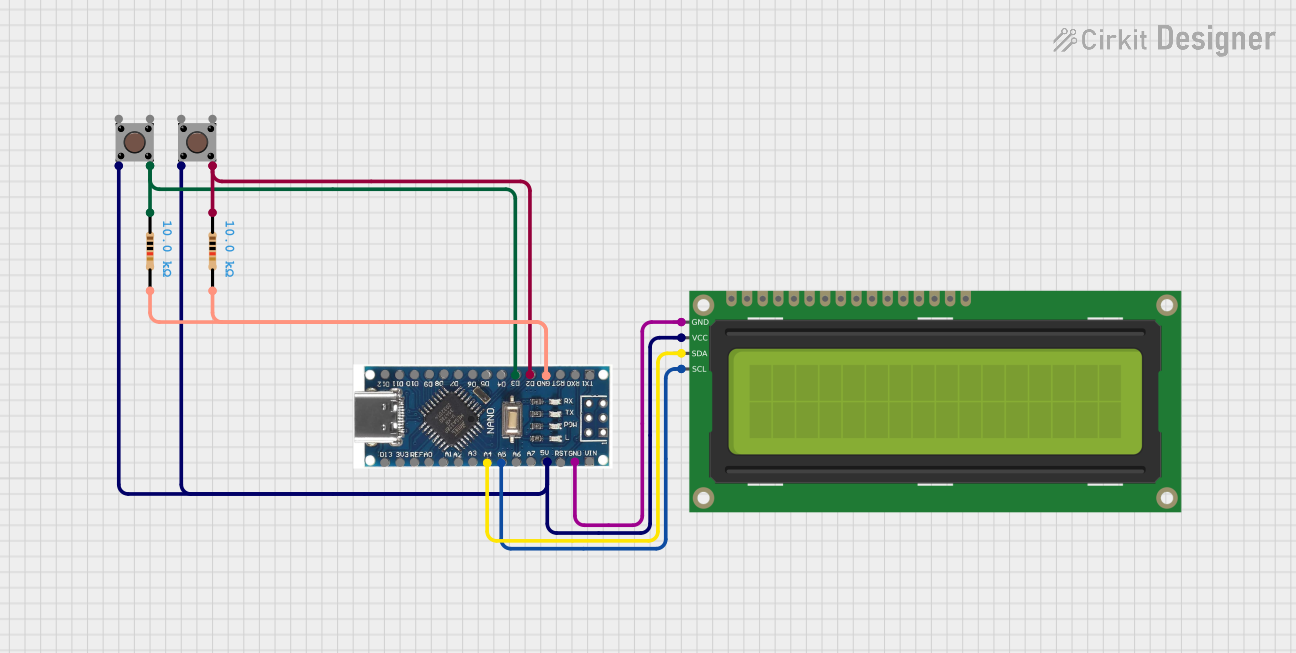
 Open Project in Cirkit Designer
Open Project in Cirkit Designer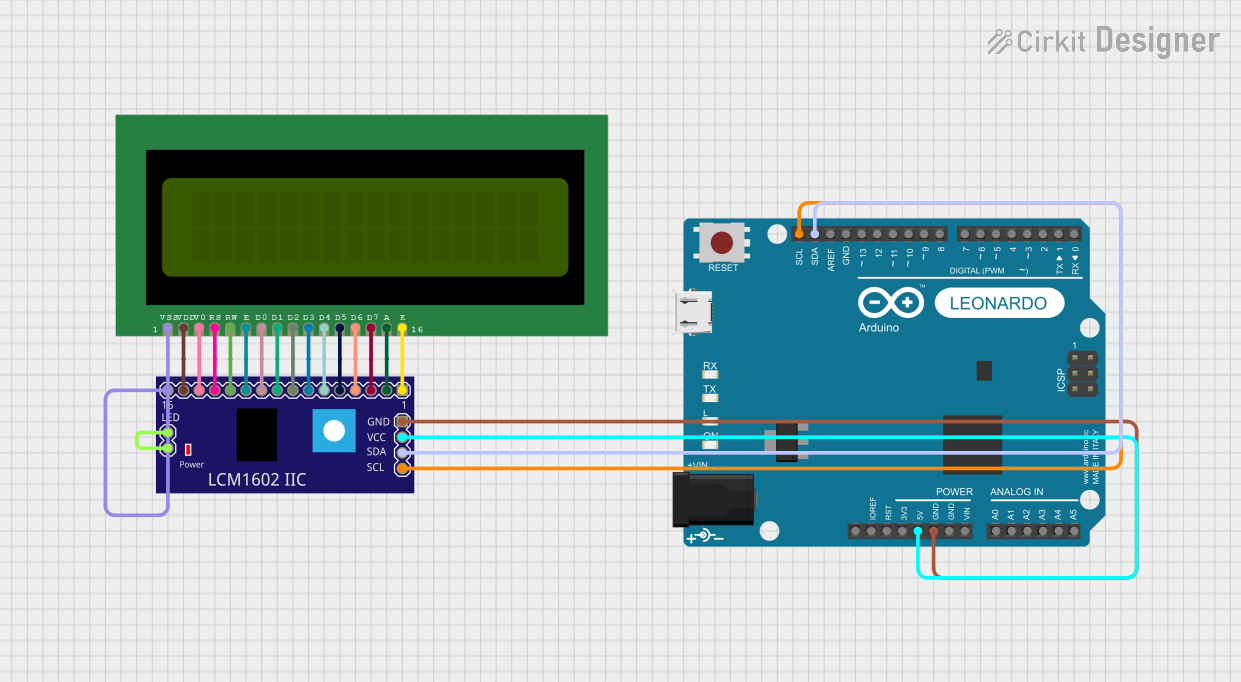
 Open Project in Cirkit Designer
Open Project in Cirkit DesignerExplore Projects Built with LCD 0802A 8x2

 Open Project in Cirkit Designer
Open Project in Cirkit Designer
 Open Project in Cirkit Designer
Open Project in Cirkit Designer
 Open Project in Cirkit Designer
Open Project in Cirkit Designer
 Open Project in Cirkit Designer
Open Project in Cirkit DesignerCommon Applications
- Embedded systems and microcontroller projects
- Home automation systems
- Industrial control panels
- Educational and prototyping projects
- Consumer electronics with text-based interfaces
Technical Specifications
Below are the key technical details of the LCD 0802A module:
| Parameter | Value |
|---|---|
| Display Type | Alphanumeric LCD |
| Display Size | 8 characters x 2 lines |
| Operating Voltage | 4.7V to 5.3V |
| Operating Current | ~1.5mA (without backlight) |
| Backlight Voltage | 4.2V to 4.6V |
| Backlight Current | ~15mA |
| Character Size | 5x8 dot matrix |
| Interface Type | Parallel (4-bit or 8-bit) |
| Operating Temperature | -20°C to +70°C |
Pin Configuration
The LCD 0802A has 16 pins, as described in the table below:
| Pin Number | Pin Name | Description |
|---|---|---|
| 1 | VSS | Ground (0V) connection |
| 2 | VDD | Power supply (4.7V to 5.3V) |
| 3 | V0 | Contrast adjustment (connect to a potentiometer for contrast control) |
| 4 | RS | Register Select: 0 = Command, 1 = Data |
| 5 | RW | Read/Write: 0 = Write, 1 = Read |
| 6 | E | Enable: Triggers data read/write when transitioning from HIGH to LOW |
| 7 | D0 | Data Bit 0 (used in 8-bit mode only) |
| 8 | D1 | Data Bit 1 (used in 8-bit mode only) |
| 9 | D2 | Data Bit 2 (used in 8-bit mode only) |
| 10 | D3 | Data Bit 3 (used in 8-bit mode only) |
| 11 | D4 | Data Bit 4 (used in both 4-bit and 8-bit modes) |
| 12 | D5 | Data Bit 5 (used in both 4-bit and 8-bit modes) |
| 13 | D6 | Data Bit 6 (used in both 4-bit and 8-bit modes) |
| 14 | D7 | Data Bit 7 (used in both 4-bit and 8-bit modes) |
| 15 | LED+ | Backlight anode (connect to 5V through a current-limiting resistor) |
| 16 | LED- | Backlight cathode (connect to ground) |
Usage Instructions
Connecting the LCD 0802A to a Microcontroller
The LCD 0802A can be interfaced with a microcontroller using either 4-bit or 8-bit parallel communication. The 4-bit mode is more commonly used as it requires fewer GPIO pins.
Example: Connecting to an Arduino UNO
Below is a typical wiring configuration for 4-bit mode:
- VSS: Connect to GND
- VDD: Connect to 5V
- V0: Connect to the wiper of a 10kΩ potentiometer (other ends to 5V and GND)
- RS: Connect to Arduino digital pin 7
- RW: Connect to GND (write mode)
- E: Connect to Arduino digital pin 8
- D4-D7: Connect to Arduino digital pins 9, 10, 11, and 12 respectively
- LED+: Connect to 5V through a 220Ω resistor
- LED-: Connect to GND
Arduino Code Example
The following code demonstrates how to use the LCD 0802A with an Arduino UNO using the LiquidCrystal library:
#include <LiquidCrystal.h>
// Initialize the library with the pins connected to the LCD
// RS = 7, E = 8, D4 = 9, D5 = 10, D6 = 11, D7 = 12
LiquidCrystal lcd(7, 8, 9, 10, 11, 12);
void setup() {
// Set up the LCD's number of columns and rows
lcd.begin(8, 2);
// Print a message to the LCD
lcd.print("Hello,");
lcd.setCursor(0, 1); // Move to the second line
lcd.print("World!");
}
void loop() {
// No actions in the loop for this example
}
Important Considerations
- Contrast Adjustment: Use a 10kΩ potentiometer to adjust the contrast via the V0 pin.
- Backlight Resistor: Always use a current-limiting resistor (e.g., 220Ω) for the backlight to prevent damage.
- Power Supply: Ensure a stable 5V power supply to avoid flickering or malfunction.
- Initialization: Always initialize the LCD in your code before attempting to display text.
Troubleshooting and FAQs
Common Issues
- No Display on the Screen
- Solution: Check the power connections (VDD and VSS). Ensure the contrast is properly adjusted using the potentiometer.
- Flickering or Unstable Display
- Solution: Verify the power supply voltage and current. Use decoupling capacitors if necessary.
- Incorrect or Garbled Characters
- Solution: Ensure proper wiring of the data pins (D4-D7) and correct initialization in the code.
- Backlight Not Working
- Solution: Check the LED+ and LED- connections. Ensure the current-limiting resistor is in place.
FAQs
- Can I use the LCD 0802A with a 3.3V microcontroller?
- Yes, but you will need a level shifter or voltage divider for the data pins, and the backlight may not function optimally.
- What is the maximum viewing angle of the LCD?
- The LCD 0802A typically has a viewing angle of around 45° to 60°.
- Can I use the LCD without a backlight?
- Yes, the LCD will still function without the backlight, but visibility may be reduced in low-light conditions.
By following this documentation, you can effectively integrate the LCD 0802A into your projects and troubleshoot common issues with ease.